Household incomes remained high in the aftermath of the First World War and, after the shortages of the war, the demand for biscuits was buoyant. The suffragette movement brought increased rights for women that were reflected in new social events like cocktail parties. This led to an increasing demand for cocktail and savoury cheese biscuits. Foil-wrapped chocolate biscuits, like the ‘Empress of Britain’, were introduced during the Jazz Age. The designs and names of these biscuits suggested the excitement of ocean liner travel, film stars and the fast set lifestyle.
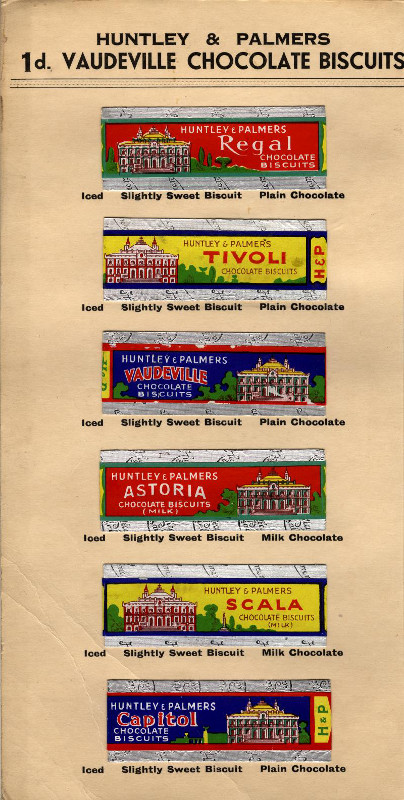
These attractive designs for the foil wrappers of Huntley & Palmers' one penny chocolate biscuits reflects the aspirational mood of the Jazz Age. (REDMG : 1999.2.22)
Biscuit designs and film stars
Until World War II, Huntley & Palmers were devising biscuits in hundreds of different shapes and sizes. These shapes included people and Jackie Coogan, the child star of Charlie Chaplin's 1921 hit movie 'The Kid', lent his name to a biscuit shaped like his head. This unusual shape was not repeated fifteen years later for the Shirley biscuit which commemorated another infant phenomenon, Shirley Temple: hers was a straightforward rectangular shortcake.
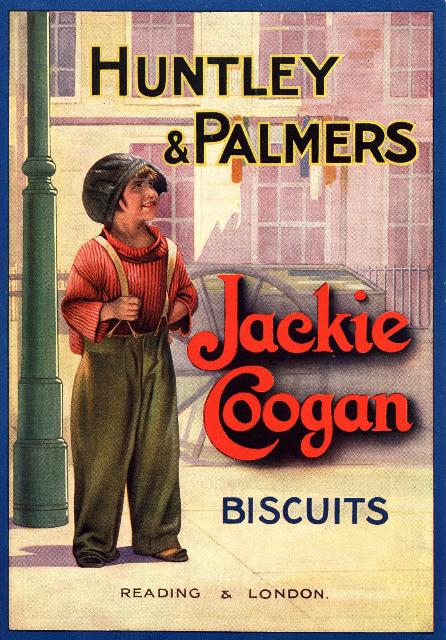
Jackie Coogan was the child star of Charlie Chaplin's hit movie of 1921, The Kid. Huntley & Palmers often associated its products with film stars and royalty. (REDMG : 1997.82.199)
Biscuit Week
In 1933 a Biscuit Week was held in Reading to promote Huntley & Palmers sales locally so as to bring more trade in the town and to illustrate how towns can deal with their own unemployment problems. The Mayor of Reading was presented with a tin during the opening and the female staff carried armfuls of balloons which they released into the sky. A label was attached to each and those returning the labels received a free tin of biscuits.
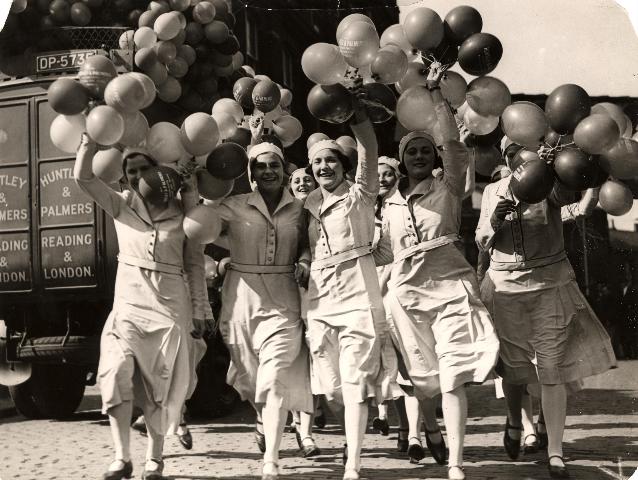
A group of women workers hold promotional Huntley & Palmers balloons for 'Biscuit Week' in 1933. (REDMG : 1997.130.185)
Tribrek breakfast cereal
One of the major changes in diet between the wars was the widespread adoption of cereals. In 1934 the company introduced a breakfast food, Tribrek, with an advertising outlay of £20,000. Its initial success seems to have been almost wholly responsible for the improvement in home turnover during 1935. Just under a million and a half packets were sold in 1939 however the company discontinued its manufacture in 1943 when materials became scarce and it never resumed production.
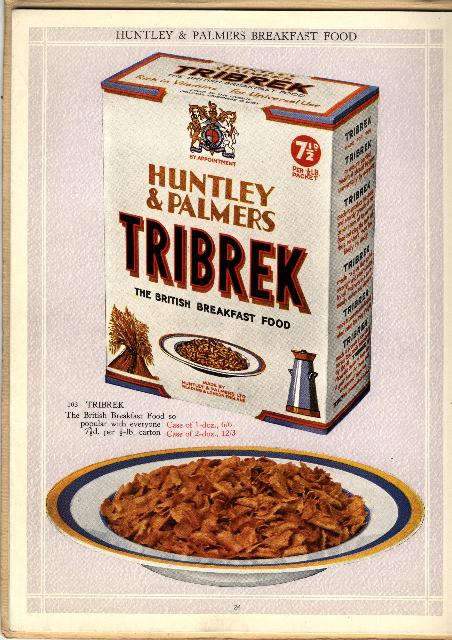
This 1934 catalogue features a full page about the company's new breakfast cereal 'Tribrek'. Cereals were a new and popular product and Tribrek soon accounted for the majority of the company's British sales growth. (REDMG : 1994.21.70)
John Ginger and the Ginger Nut biscuit
In 1933 the company created the John Ginger character as part of a campaign to increase output. This marketing strategy successfully maintained Ginger Nuts as Huntley & Palmers' best-selling biscuits.
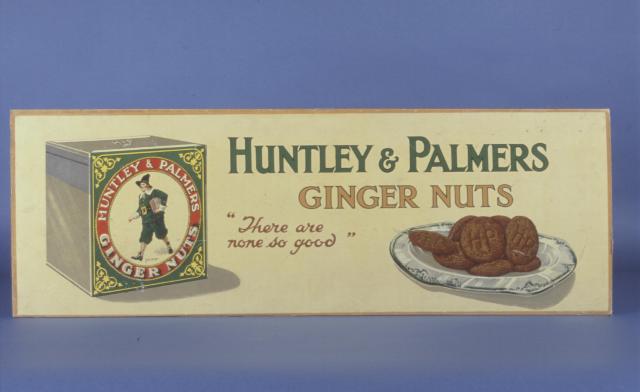
This shop display advert is probably from that 1930s promotion and would have been used in window displays of Ginger Nuts tins and the latest cardboard carton packaging. (REDMG : 1997.162.70)
Poor sales and falling quality
The new varieties of biscuits and cakes issued between the war led to a significant rise in the percentage of total food expenditure on biscuits from 1.2% in 1920 to 2.1% in 1938. Unfortunately, despite their marketing campaigns, Huntley & Palmers sales did not increase accordingly. Between 1914 and 1929 their share of UK biscuit production fell from 46.6% to 28.0% and one unwelcome development was the large number of complaints received about the quality of the company's biscuits - a sad comparison with the days when Huntley & Palmers were renowned for the high quality of their products.
The next section is the Second World War and Huntley & Palmers.





